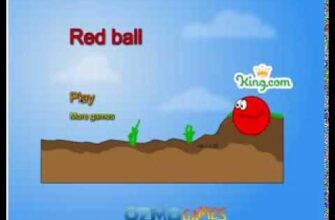The U.S. Men`s National Team finds itself at a familiar crossroads, grappling with performance inconsistencies and a pressing need to forge a coherent identity. With the 2026 World Cup on home soil looming, the pressure on coach Mauricio Pochettino and his squad is palpable, intensifying after another disheartening defeat. The upcoming friendly against Japan isn`t just another game; it`s a critical litmus test for a team searching for answers.
Pochettino`s Perplexing Pursuit of Progress
Barely a year into his tenure, Mauricio Pochettino`s reign as USMNT head coach has been, to put it mildly, a rollercoaster. A recent 2-0 loss to South Korea marked his seventh defeat in 17 matches, casting a long shadow over the team`s trajectory. The tactical philosophy, or perhaps the persistent lack thereof, remains a central point of contention.
Pochettino`s stated aim of experimenting with the player pool is understandable, yet the recurring theme of uninspiring results suggests that these experiments are yielding more questions than solutions. A telling statistic highlights the challenge: only one win in seven matches against FIFA Top 30 opponents. This record hardly inspires confidence, especially when contrasted with the monumental task of building a competitive side for a home World Cup.
“It`s not looking good. Mauricio Pochettino`s insistence that the USA had had the better of South Korea falls apart after one crucial fact: this was a friendly that they were chasing for 72 minutes. Across most of that time, the USA`s only great chance fell to substitute Chris Richards, and it was only a string of scrappy late misses by Folarin Balogun that bumped the [expected goals] tally up.”
This sentiment, echoed by many observers, underscores a critical issue: the team often looks outmatched and disorganized against higher-ranked opposition. The “search for something new” appears to be yielding merely more of the familiar.
Defensive Disarray and Tactical Tinkering
The loss to South Korea was a stark demonstration of the USMNT`s defensive frailties. Both goals conceded were products of disorganization at the back, particularly highlighting struggles for debutant center-back Tristan Blackmon and the returning Sergino Dest, playing his first international match since an ACL injury. While Dest possesses undeniable attacking flair, his defensive lapses remain a persistent concern. The wider issue of finding a reliable left wing-back in Antonee Robinson`s absence further complicates matters.
Pochettino`s mid-game shift to a back three against South Korea, integrating Chris Richards, hinted at potential tactical flexibility. This tactical pivot, as the coach explained, aims to leverage the squad`s characteristics:
“I think it`s a good moment to do some tests, no? We can be more stronger sometimes, some games to use three center backs because [of] our characteristics and players like Sergino Dest or Alex Freeman or Max Arfsten, they are wingbacks. They are players that can cover the distance there and they have quality and then players that play on the half space in between the lines like [Christian] Pulisic, Diego Luna, [Alex] Zendejas, [Luca] de la Torre – too many players that can play in that space. We can create superiority and dominate and that`s really important.”
The theory is sound: enhance defensive solidity while unleashing creative attackers. The practical application, however, requires a stable defensive unit – something the USMNT is still striving to achieve. The presence of Chris Richards, arguably the team`s most composed defender, consistently elevates the backline, making his inclusion crucial for any defensive structure.
The Elusive Number 9: A Striker`s Conundrum
Perhaps no position has plagued the USMNT more consistently than the “number 9” role. The search for a prolific and reliable striker capable of leading the line continues to be a frustrating saga. Josh Sargent, fresh off a strong start to his Championship season, was given another opportunity against South Korea. The results, however, were unfortunately familiar: zero shots and a mere 17 touches in 62 minutes, extending an international goalless drought dating back to November 2019.
Enter Folarin Balogun. Coming on as a substitute after an injury-plagued year, Balogun immediately injected dynamism into the attack. In just 28 minutes, he managed four shots and 22 touches – a stark contrast to Sargent`s output. This performance has quickly reasserted Balogun as the frontrunner for the starting striker position. A strong showing against Japan could, at long last, bring some clarity to this years-long quandary.
The Japan Test: A Final Reckoning Before the Core is Chosen
The friendly against Japan looms as a pivotal encounter. For Pochettino, it represents the final “run out” before he commits to a core group of players for the upcoming crucial matches. This match isn`t just about winning; it`s about showcasing cohesion, resilience, and a clearer tactical vision. The team`s 26th place in the latest World Cup power rankings, even below fellow co-hosts Canada, underscores the urgency.
Japan, a team known for its organization and attacking quality, presents a formidable challenge. For the USMNT, this is an opportunity to silence the growing chorus of doubters and demonstrate tangible progress. Can the team finally shed its inconsistencies, solidify its defense, and find a consistent goal-scorer? The answer, or at least a clearer indication, will emerge on the field against Japan.
The road to the 2026 World Cup is undoubtedly rocky for the USMNT. The challenges are numerous, from tactical identity to individual form and collective cohesion. Yet, within these challenges lies the opportunity for growth. The Japan friendly is not merely a test of skill, but a test of character and direction for a national team yearning to prove its worth on the world stage.







